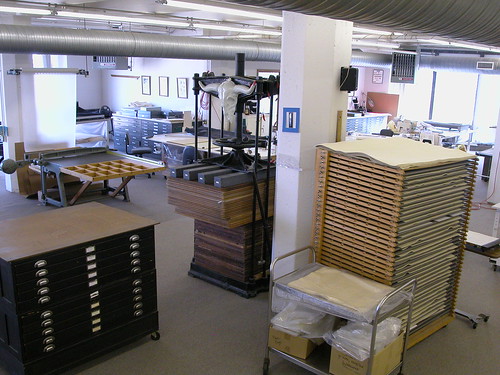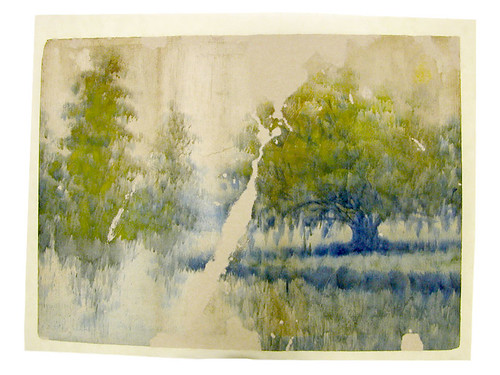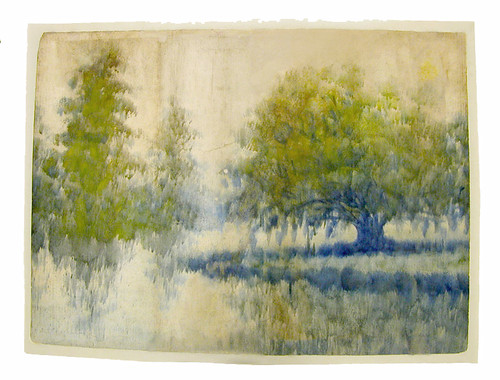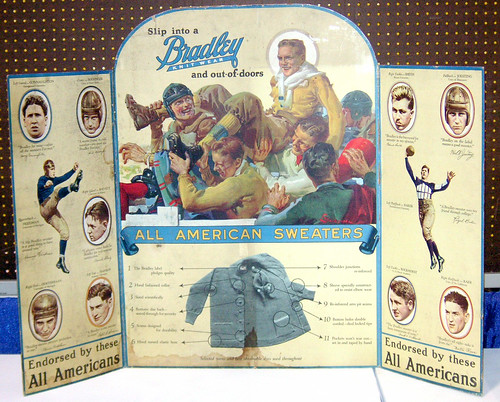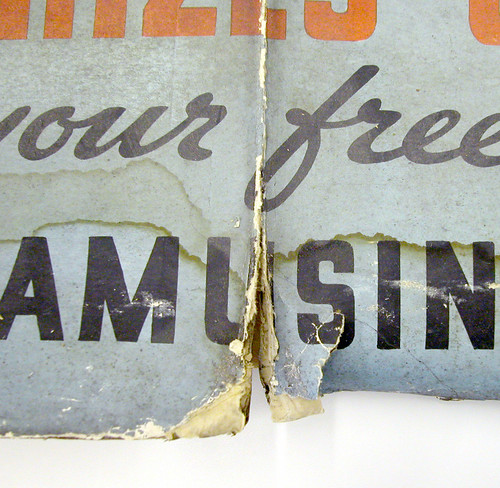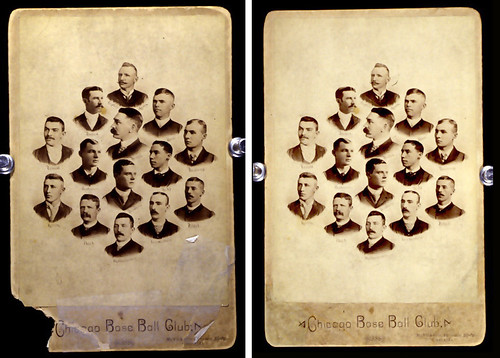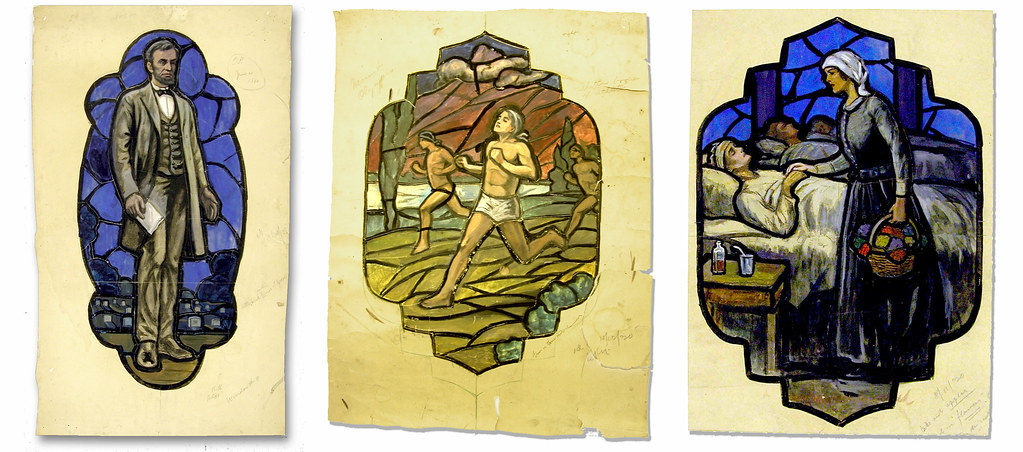
In April of 2004, a box of tightly rolled drawings, covered with layers of dust and dirt were delivered to our
lab. The bottom of the filthy box was teeming with numerous fragments from who knows how many rolls. The drawings were so brittle, they couldn't be unrolled without causing severe damage. They were so messy, severely damaged and so incredibly delicate, we couldn't help wondering "can these things even be saved"?

The original box (on left) of rolled drawings
The answer had to be yes, because this beat up cardboard box contained original hand drawn designs for a one of the last series of stained glass windows produced by the
Louis Tiffany Studios, before they closed their doors in 1932. These windows are the focal point of the
Peace Chapel in the
Levere Memorial Temple, which stands as the headquarters of the
Sigma Alpha Epsilon Foundation, the largest collegiate fraternity. This grimy box of drawings complete with the original Tiffany label still attached was finally dug out of the Sigma archives where it had been stored since the
Temple's construction in 1930. It was clear, these items were in desperate need of repair.
 Back of one drawing unrolled as much as possible and weighted down. Tears and old tape are visible above.
Back of one drawing unrolled as much as possible and weighted down. Tears and old tape are visible above. Because we could not attempt unrolling them without causing damage, we were unable to perform our customary examination or treatment proposal. Our initial reports had to be made based solely on what could be examined from the exterior of the rolls, which itself was far from promising. In addition to the extensive surface dirt and brittleness, the drawings contained large tears running the width of the rolls, horizontally as well as vertically. Some old repairs had been made with a variety of poor quality tapes only adding to the overall damage and fragile state of the cartoons. We couldn't even begin to guess which drawings the hundreds of fragments matched up with. It was apparent the items would need an initial first stage of treatment before they could even be assessed.
First, we needed to gently humidify the paper in order to carefully unroll and lightly flatten the drawings to determine further treatment options. The drawings were still so dirty, they needed to have the surface dirt reduced in a series of dry cleaning treatments before they could be digitally photographed for an inventory. There were so many paper fragments, we were still unable to come up with an exact number of cartoons at the end of stage one.
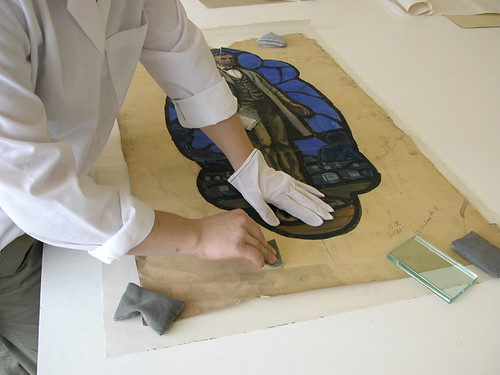 A conservator surface cleaning with a dry cleaning sponge.
A conservator surface cleaning with a dry cleaning sponge.It was necessary for us to examine and test the brittle cartoons to determine the second stage of treatment. Wet treatments would strengthen the paper, but presented too much risk to the delicate painted colors which tested sensitive and soluble to water. To complicate matters, areas of this delicate paint were also beginning to crack and flake which was further aggravated by even light handling.
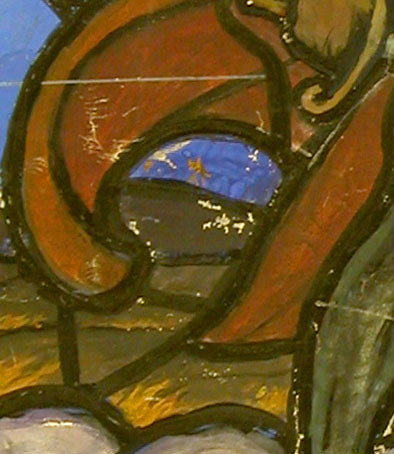
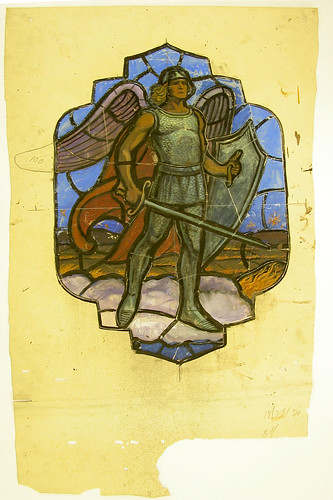 This detail of an angel drawing (full image before treatment on right) demonstrates the flaking media.
This detail of an angel drawing (full image before treatment on right) demonstrates the flaking media.The original artists had also applied many layers of paper collage elements to the paper using very liberal amounts of what appeared to be animal hide glue. The glued collage elements were creating a pull on the paper, causing further stress and leading to tears and losses in the brittle wood pulp paper, a poor quality material to begin with which was used mainly for sketching. Originally, these drawings were only made as reference materials, with no intention of permanence.
Even the light handling of these delicate items for examination created further damage. From every direction we were faced with serious obstacles. We knew the treatment was necessary as well as nightmarish. Did we stop when presented with a challenge of this magnitude. NO!!! The gauntlet had been laid. We were itching to move forward just needing the go ahead from the client.

Drawings awaiting funding to complete stage 2 of treatment.
The project was in need of donations from members of Sigma Alpha Epsilon to move forward. To help energize fund raising efforts, we chose a single cartoon to put through the full treatments we had proposed for the group and document the process in detail. The cartoon selected for this treatment was the very iconic image of
everyone's favorite president, Abraham Lincoln!
 The two images on the left show the before images with the after image on the right.
The two images on the left show the before images with the after image on the right. The Abraham Lincoln drawing was further cleaned and all old repairs were removed. Tears were painstakingly repaired using Japanese tissue and starch paste adhesive. Losses in the paper were filled with a heavy weight Japanese tissue. The cartoon was again placed into a humidity chamber to relax before being gently flattened between wool felts. Design losses were
inpainted by hand to match the surrounding areas. The Lincoln cartoon was matted with 100% buffered rag board and placed behind UV filtering
plexi glass in preparation for being placed into a frame for display.
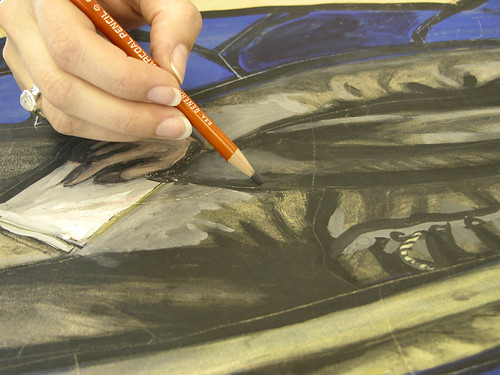 Media losses on the Lincoln drawing being filled with removable media.
Media losses on the Lincoln drawing being filled with removable media. The results were absolutely stunning. Over the next two years, the foundation was able to
raise tens of thousands of dollars thanks in part to the persuasive efforts of Honest Abe on generous benefactors. The treatment for the remaining 68 cartoons was completed by the end of 2006.
 After treatment of drawing of Vikings
After treatment of drawing of Vikings.
Back in 2004, when the many rolls of severely damaged paper arrived at our facility, it was unclear if the items could even be saved. It was miraculous and rewarding to see the project go from conception to completion These cartoons are now preserved to aid future generations in gaining a key insight into the execution of this wonderful and important collection of Tiffany stained glass windows.
